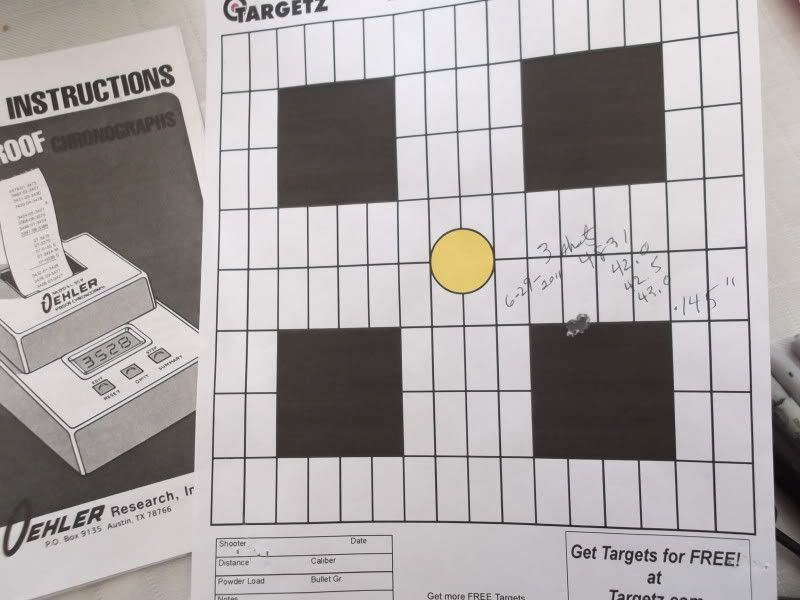Re: Which Group Is Better ..... why do you think so???
OK,
I couldn't stand sitting here any longer so I decided to load up and go to the range. It actually worked out since the snow stopped and the wind dropped off completely. So, I figured I'd load up some more rounds.
Brass - FC once fired brass, FL sized, trimmed, beveled/chamfered, uniformed primer pockets inside and out, cleaned with stainless steel media.
Primer - CCI
Powder - AA 2520, Min 40.0 Max 44.0, loaded four rounds at 40.0, .2, .4, .6, .8, 41.0, .2, .4, .6, .8, 42.0, .2, .4, .6, .8, loaded a total of 60 rounds.
Bullet - Hornady 168gr AMAX
Rifle - 20" Remington 700 SPS Tactical .308, B&C Tactical Medalist A2 stock, X-mark pro trigger, Vortex Crossfire 6-24 x 50 scope, Warne Tactical tall rings, EGW 20 MOA scope base.
Range - 100 yard outdoor range, plywood target back @ 100 yards, wooden shooting bench, adjustable shooting rest
Condiitons - Light snow flurries, 33 degrees
Wind - no apperant wind, 0 mph
Elevation - 50 feet above see level
Here's a pic of the range ...........
Here is a pic of how I had my ammo loaded, and labeled to avoid confusion ...........
My range has a small shooting rest they will let you borrow. I used it to take as much of "ME" out of the equation as I can ......
Here is the results of my latest test group. Each group was four shots. The first group was top left and went in order to the right. Then down to the next row and left to right. Each group is labled with the group number and the powder charge used for that group. Each labeled group of rounds was double checked for powder charge before loading and shooting. There were a couple of called flyers and are labeled as such on the target (target 2 and 9, only 3 shots were fired at target 13). Three groups in a row were shot with a 5 minute interval between groups. After each row of three groups were shot, the barrel was allowed to cool for 15 minutes.

As you can see, the same thing happened with this test group as with the other test groups. The hotter the load, the lower it got. I checked the scope rings before shooting an after each 4 shot group to ensure it was tight. The scope rings had no effect on the groups. The action screws were also checked for tightness before shooting and after the test. The action screws also had no effect on the groups.
Same question, which group is better and why do you think so?? I'm shooting to see which load works best in this rifle. Once I decide on a load, I'll rezero to that load and then shoot for the smallest group with all the rounds loaded to the same load.
For those that might ask "why didn't you load 43.0, .2, .4 etc ...." All I had left was 60 AMAX bullets. The local shop was out and I could only load 60 rounds.









